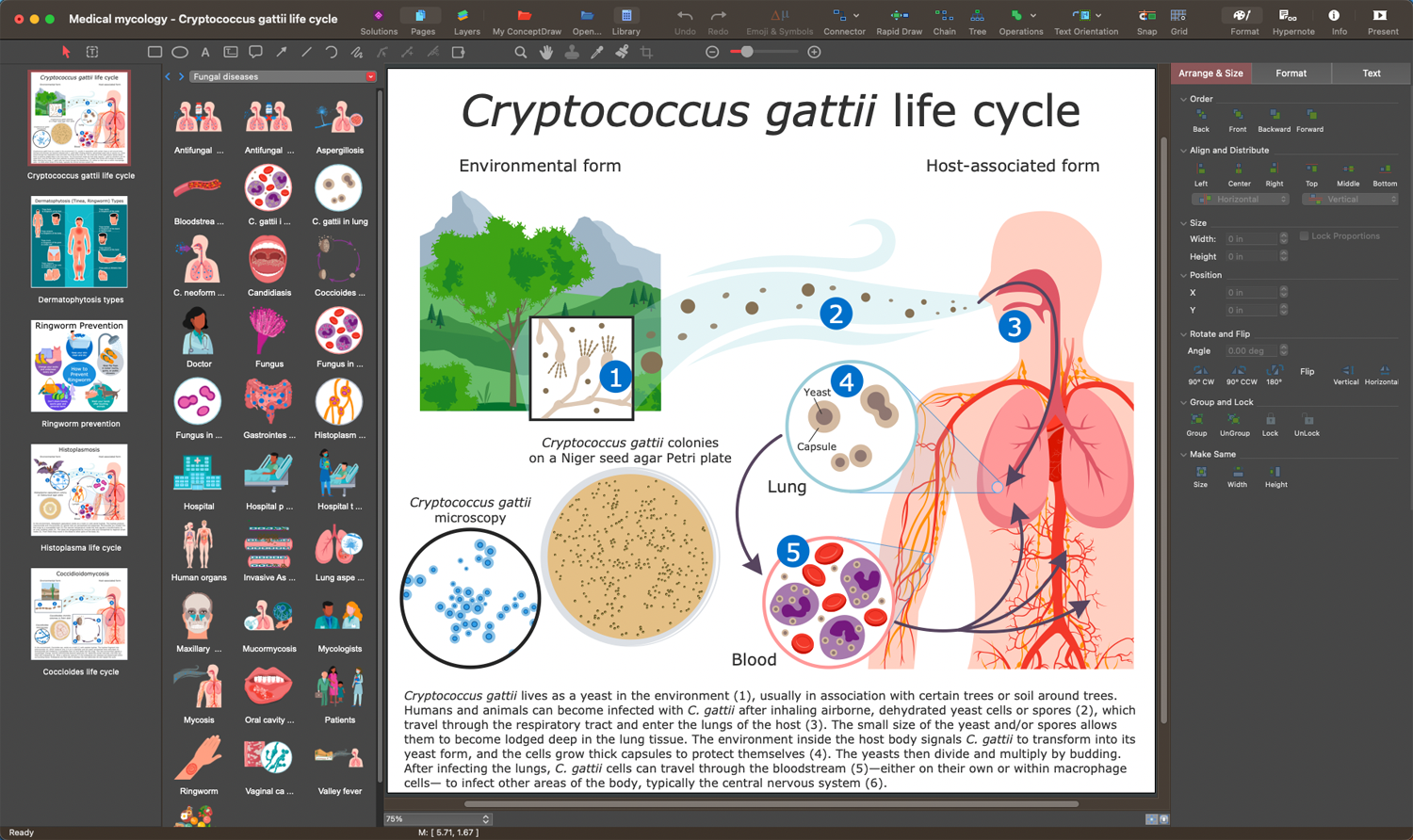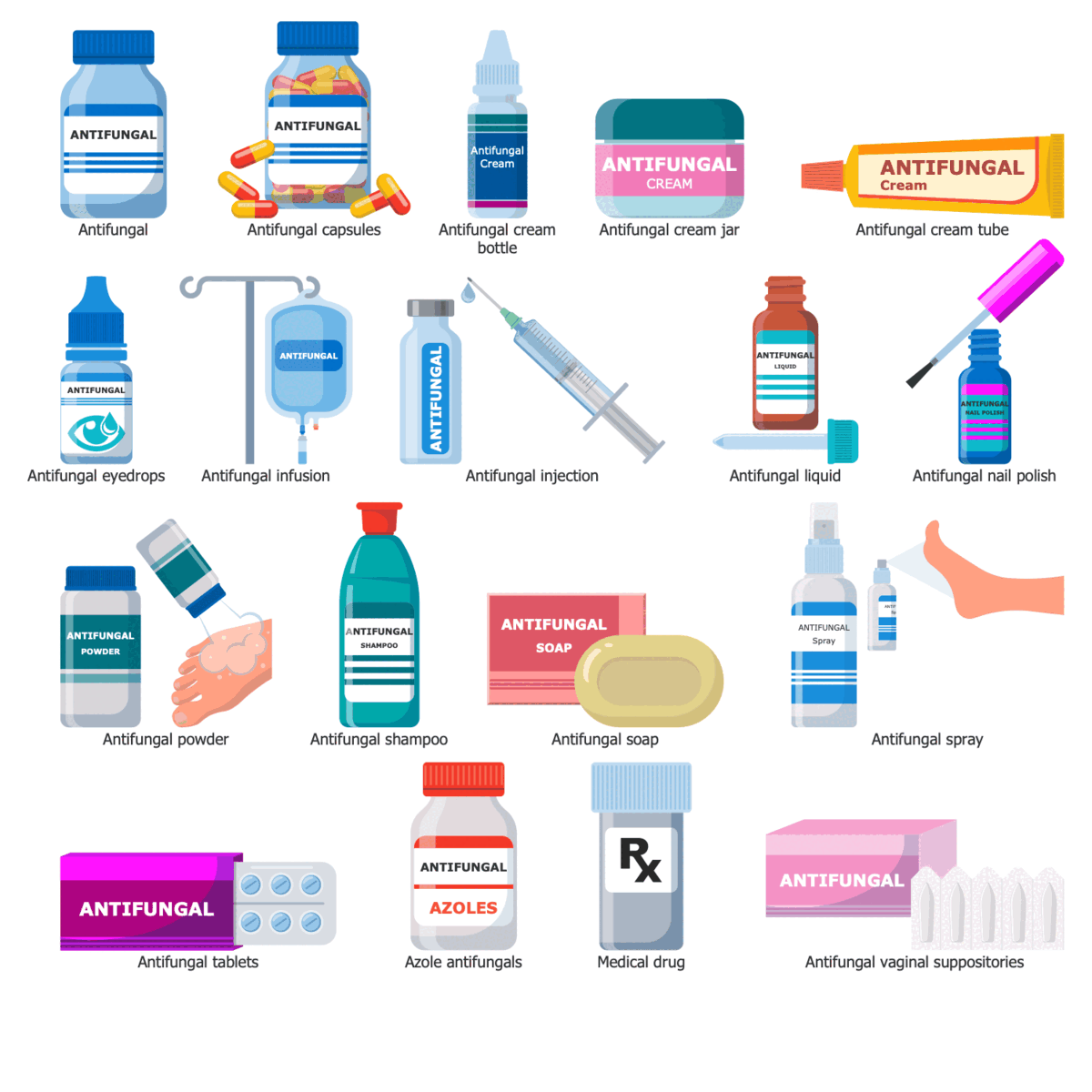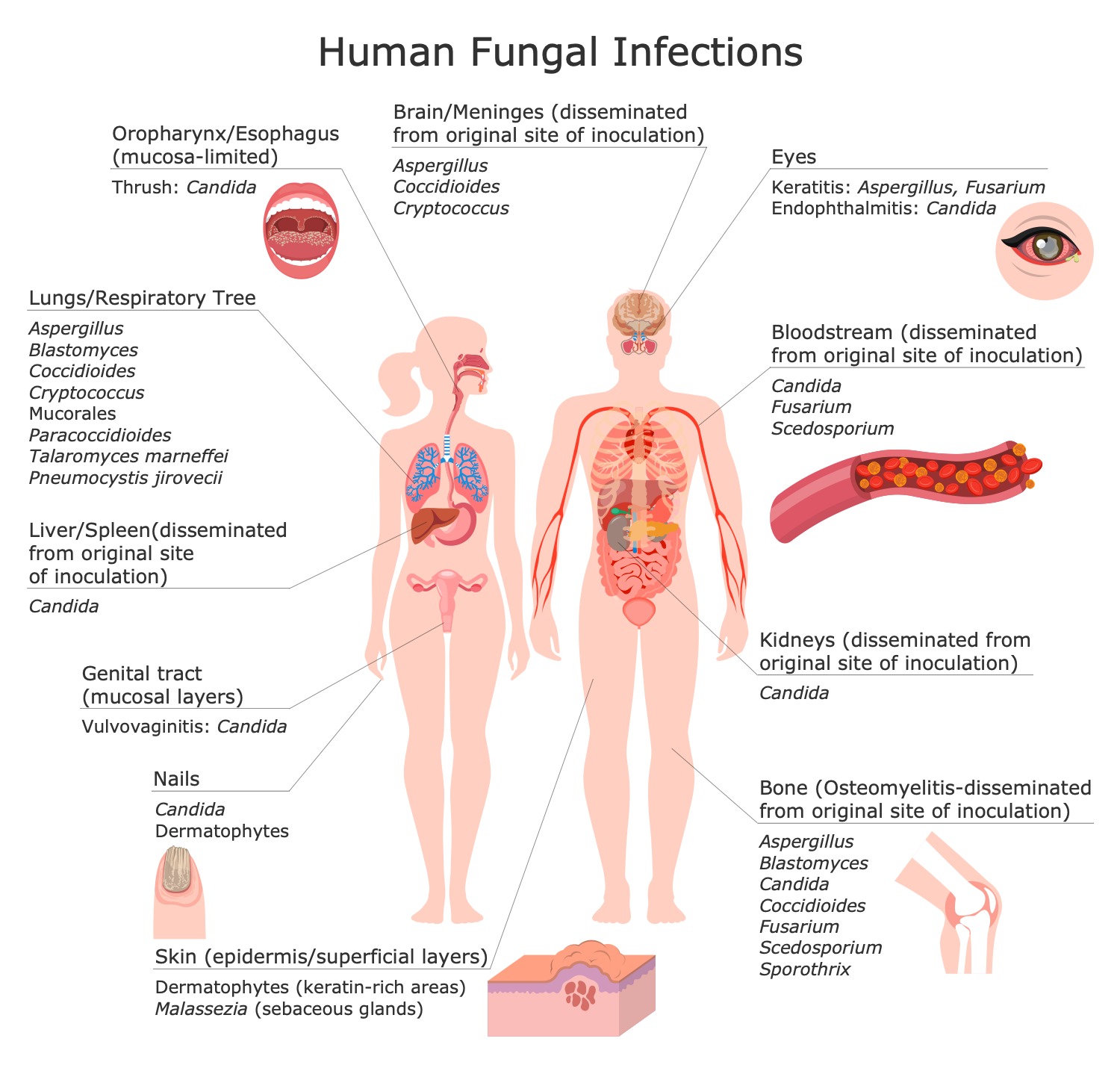Fungal Diseases
Fungal diseases are caused by fungi and can affect anyone and any part of the body or several parts. There are hundreds of fungi in the environment. Fungi are microorganisms that can exist on human skin or inside the organism without any harmful action. Most people are exposed to them regularly without any adverse reaction. However, specific conditions can cause the overgrowth of fungi, their colonization, disease and its progression, symptoms, and harmful effects.
When fungi become too prevalent in a certain area of the body, organ, or system of organs and the immune system is unable to defeat them, a fungal disease occurs. The most common fungal diseases are tinea pedis or athlete’s foot, tinea corporis or ringworm, tinea cruris or jock itch, yeast infection or candida infection.
The key reason for fungi to become extremely dangerous and lead to life-threatening diseases is reduced immunity. People with a weakened immune system, patients after operations, those taking antibiotics, the elderly, the critically ill, and with severe chronic diseases are in the at-risk group for fungal infections. Unfortunately, the number of infected people continuously rises each year. It is because of the complex social and economical situation, long-term therapeutic application of antifungals, and usage of agricultural fungicides. Moreover, currently, acquired resistance of some fungi strains to antifungal drugs is a key issue that causes a global threat in counteracting fungal infections. Less susceptible fungal strains are found more and more often.
It is important to recognize the symptoms of fungal disease as early as possible to quickly treat it and prevent serious complications. If you note signs or symptoms of a fungal infection, obligatory check with your doctor. After a physical exam and discussion of symptoms, additional testing, investigation of an infected system of organs, the determining existence and the type of fungus causing the infection may be necessary. Medical testing methods include scraping of your skin or nail, testing a hair sample, making a blood test, sputum, vaginal secretion or urine test, a biopsy of organ tissue, and cerebrospinal fluid research.
Usually, the symptoms of mild fungal skin diseases include redness, rashes, cracking skin, peeling skin and are treated quickly and simply. More serious forms of fungal diseases include burning sensations, itching, swelling, stinging, feeling sick, diarrhea, tiredness, vomiting, and other symptoms. They require complicated treatment and can cause fatality if not treated.

Example 1. Fungal Diseases - Infographics Design in ConceptDraw DIAGRAM
Fungal infections are contagious, they can spread from animals and from one person to another through direct contact or through shared things like towels, linen, etc. Contaminated soil, objects, or surfaces, especially in damp warm premises like public showers, pools, and locker rooms are a source of taking fungal infections.
However, basic personal hygiene and strengthen immunity help to avoid infection and prevent disease. Keep your skin clean and dry, wear flip-flops or sandals in public showers, and don't share your private items like towels, clothes, shoes, sports equipment with other people. These simple rules help to avoid fungal infections.
Most fungal skin infections are treated with creams, sprays, shampoos, gels, drops. Severe infection may require complex treatment with oral medications, pills, or injections. It is always best to turn to a doctor at the first signs or symptoms of infection to avoid disease development and possible complications.
Example 2. Medical Mycology Libraries Design Elements
ConceptDraw DIAGRAM software provides the Medical Mycology solution with a wide set of predesigned vector elements and ready-made samples illustrating fungi types, fungus cell cycle, ways of spreading, and other mycology-related issues. 17 libraries with 350+ vector design objects included are incredibly effective to illustrate a variety of fungal diseases, their etiological agents, pathogens, common symptoms, and ways of treatment. These professional tools are useful for medical scientists, researchers, mycologists and microbiologists, clinical laboratory scientists, professors of medicine, students and interns, and many other stakeholders.
Example 3. Human Fungal Diseases
The mycology infographics you see on this page were created in ConceptDraw DIAGRAM software using the Medical Mycology Solution. They successfully demonstrate the solution's capabilities and the professional results you can achieve. An experienced user spent 10-15 minutes creating each of these samples.
Use the powerful tools of the Medical Mycology Solution for ConceptDraw DIAGRAM software to create your own infographics and diagrams of any complexity fast and easy, and then successfully use them in your work activity.
All source documents are vector graphic documents. They are available for reviewing, modifying, or converting to a variety of formats (PDF file, MS PowerPoint, MS Visio, and many more graphic formats) from the ConceptDraw STORE. The Medical Mycology Solution is available for all ConceptDraw DIAGRAM users.

